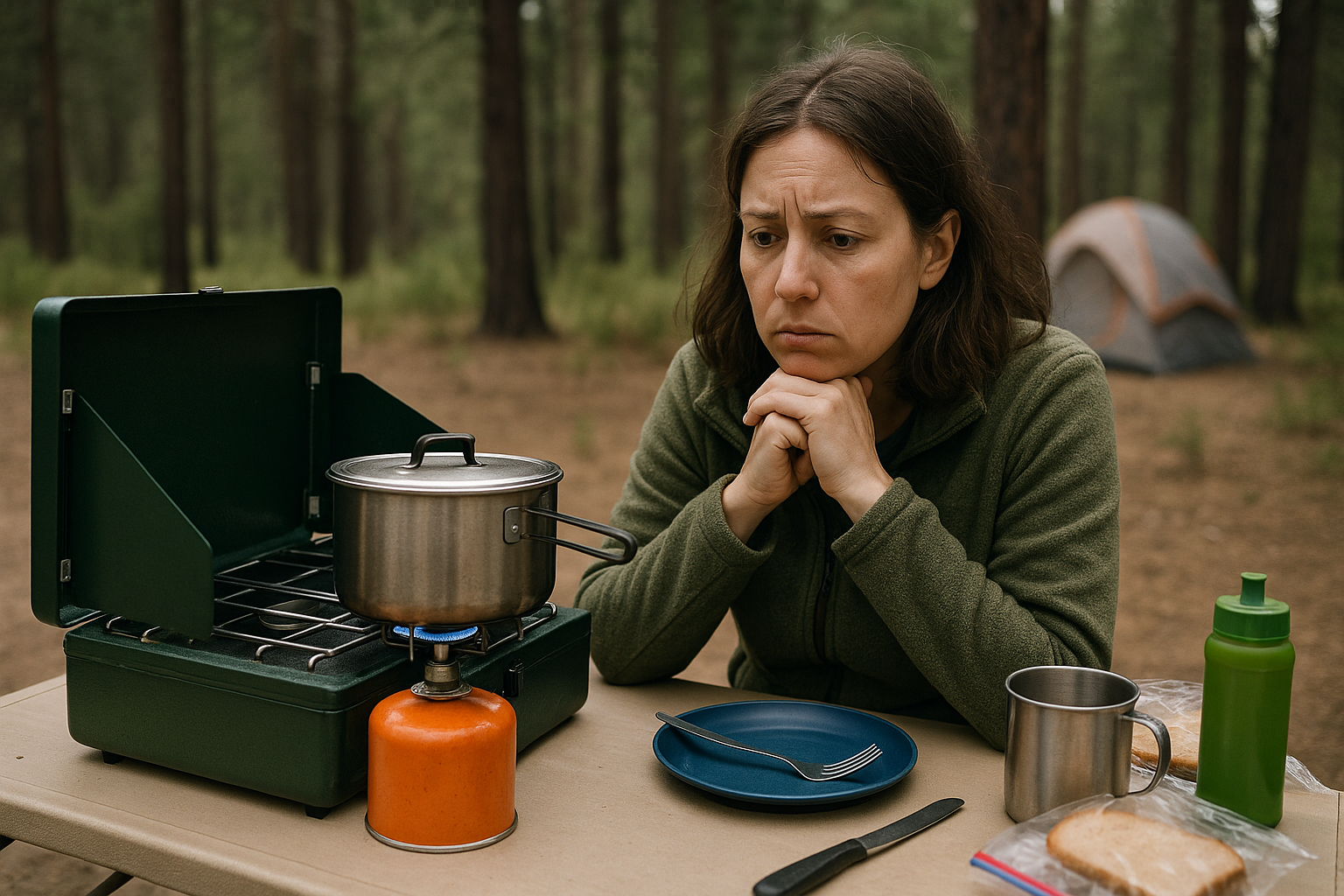Campers love the crackle of an open fire. But what happens when fire bans leave you with no option to light a flame? Whether it’s wildfire season, extreme drought, or local regulations, fire bans can turn your camping plans upside down—especially when it comes to cooking.
But don’t cancel your trip. With smart preparation and a few fire-free tricks, you can transform your camping kitchen into a survival-ready, no-flame zone. This guide reveals real-world solutions for cooking without fire, staying safe, and keeping your camping spirit intact.
🚫 The Problem: No Flames, No Fuel—Now What?
When fire bans strike, it’s not just about open fires. Many regions restrict:
- Campfires and fire rings
- Charcoal grills and wood stoves
- Even gas-powered stoves and heaters in extreme cases
This means your standard camp kitchen—with its stove, fire pit, or gas burner—may be off-limits. But you still need:
- Safe ways to cook or reheat food
- Methods to heat water for drinks or cleanup
- Reliable gear that won’t violate restrictions
🌲 1️⃣ Gear Up: Fire-Free Cooking Equipment
✅ Chemical Heat Packs and Flameless Ration Heaters
- Inspired by military MRE (Meal Ready to Eat) systems, these packs generate heat through chemical reactions.
- Use: Activate with water, slip your food pouch inside, and wait 10–15 minutes.
- Pro tip: Test your heater packs at home to ensure you know how to use them in the field.
✅ Solar Ovens and Reflective Cookers
- Devices like the GoSun Sport or DIY reflective box ovens harness sunlight to cook food.
- Ideal for sunny environments (deserts, open fields).
- Use: Preload your solar oven with pre-prepped meals or boil water slowly.
✅ Thermal Cookers (Heat Retention Cooking)
- Bring food to a boil at home (if allowed) or use solar heating, then transfer it into an insulated thermal cooker.
- Result: Continued slow cooking without added heat or fuel.
✅ Ready-to-Eat Meals and Cold Food Options
- Shelf-stable, high-energy foods (energy bars, pouches, vacuum-sealed meals).
- Include calorie-dense options like nuts, jerky, tuna packs, and rehydrated meals.
🏕️ 2️⃣ Field-Proven Fire-Free Cooking Techniques
🔥 Pre-Heat at Home or Base Camp
- Boil water or pre-cook hearty meals before heading out.
- Store in thermoses or insulated containers to keep them warm for later.
- Example: Stews, pasta, or oatmeal can stay warm for hours.
🔥 Use Body Heat and Insulation
- Place food pouches or containers inside jackets or sleeping bags to maintain warmth.
- Hack: Warm food pouches with body heat while hiking—then eat them later.
🔥 Cold-Soak Method for Grains and Pasta
- Pre-soak oats, couscous, or ramen in water for 1–2 hours.
- They’ll soften and become edible without needing heat.
- Tip: Use flavor-packed broths or add seasoning for better taste.
🔥 Solar Hydration Packs
- Use black hydration bladders or dark water bottles.
- Lay them in the sun to slowly heat water for drinking, cooking, or cleanup.
🧠 3️⃣ Trail-Tested Organization for a No-Flame Kitchen
✅ Modular Packing for Fire-Free Gear
- Keep flameless heaters, solar ovens, and pre-packed meals in a dedicated dry bag.
- Color-code gear for quick access.
✅ Cold Food First, Heat Later Strategy
- Plan meals that don’t need heat (snacks, wraps, fruit) for the first part of your trip.
- Save any slow-heated or solar-cooked meals for later.
✅ Safe Storage for Chemical Heaters
- Store in waterproof bags away from food and gear.
- Follow manufacturer safety guidelines to avoid leaks or chemical burns.
🥪 4️⃣ Real-World Meal Ideas Without Fire
✅ Breakfast:
- Overnight oats soaked in milk or water
- Nut butter wraps with dried fruit
- Yogurt and granola (if cold storage available)
✅ Lunch:
- Tuna pouches with crackers
- Tortilla wraps with hummus and veggies
- Cheese and cured meat with flatbread
✅ Dinner:
- Flameless-heated pasta pouches or pre-cooked rice
- Cold couscous salad with beans and olive oil
- MRE-style entrees with a chemical heater
✅ Snacks:
- High-calorie trail mix
- Protein bars or energy chews
- Shelf-stable dips with crackers
🧼 5️⃣ Cleanup Without Heat or Fire
✅ Use Bio-Degradable Wipes and Dry Soap Sheets
- Simplifies dish cleanup when hot water isn’t an option.
✅ Bring a Collapsible Basin
- Fill with water heated via solar methods for washing up.
✅ Pack Out Waste Smartly
- Store trash in odor-proof bags to avoid critters.
- Double-bag any chemical heater residue per regulations.
🌿 6️⃣ Stay Compliant and Safe During Fire Bans
- Check local regulations before you leave—fire bans vary widely.
- Avoid all flame sources (including matches, lighters, candles).
- Secure your camp from wildlife with odor-proof storage.
- Keep a water source or extinguisher ready for emergencies.
🌄 Conclusion: Master the No-Flame Camping Kitchen
A fire ban doesn’t mean your camp kitchen has to suffer. With a blend of smart gear, clever techniques, and real-world prep, you can stay well-fed and safe—even in the most restrictive conditions.
🔥 Prepare ahead: Bring flameless cooking options and pre-packed meals.
🔥 Think solar and insulation: Harness the sun and body heat to warm food.
🔥 Stay organized: Keep your fire-free kitchen gear packed and ready.
Whether you’re heading into wildfire-prone areas or just want a safer, low-impact camping experience, these no-flame solutions keep you covered.
👉 Bookmark this guide and share it with your camping group. Because a fire ban should never cancel your adventure—or leave you hungry.

